Longitudinal Effects of Myofascial Release with and Without 8-Week Corrective Exercises in Correcting Upper Cross Syndrome
2 Department of physiotherapy, Associate professor at faculty of rehabilitation and allied health sciences (Riphah international university), Pakistan, Email: rabiya.noor@riphah.edu.pk
3 Department of physiotherapy, Lecturer at university institute of physical therapy(The University of Lahore), Pakistan
4 Department of physiotherapy, Assistant professor at Akhtar amin college of rehabilitation sciences, Pakistan
5 Director manager at drnajeeblectures.com, Pakistan
Published: 04-Jun-2022, DOI: 10.54608.annalsmedical.2022.39
Citation: Noor R, et al. Longitudinal Effects of Myofascial Release with and without 8-Week Corrective Exercises in Correcting Upper Cross Syndrome. Ann Med Health Sci Res. 2022;12
This open-access article is distributed under the terms of the Creative Commons Attribution Non-Commercial License (CC BY-NC) (http://creativecommons.org/licenses/by-nc/4.0/), which permits reuse, distribution and reproduction of the article, provided that the original work is properly cited and the reuse is restricted to noncommercial purposes. For commercial reuse, contact reprints@pulsus.com
Abstract
Objective: Longitudinal effects of myofascial release with and without 8-week corrective exercises in correcting upper cross syndrome.
Methods: A randomized controlled trial was conducted. 24 subjects were recruited based on inclusion and exclusion criteria and were allocated to Group A and B. Assessment of pain, function, Cranio-vertebral angle, Rounded shoulder posture, Pectorilis Minor Index, Levator Scapulae Index was taken using NPRS, NDI, vernier caliper and photogrammetric method. Group-A received treatment with hot pack, postural correction and myofascial release therapy. Group-B received hot pack, postural correction myofascial release therapy and corrective exercises. Three sessions per week for eight weeks were given to each patient. The two groups were reassessed after 8 weeks of treatment. Follow up was taken 4 weeks after completion of treatment. Data was analyzed by using SPSS 21.
Results: Findings revealed that the differences among groups were statistically significant as p<0.05 and also statistically significant difference were observed within group analysis (p<0.05) with respect to pain, function, cervical and shoulder angles and muscle length in correcting UCS.
Conclusion: The study concluded that both Myofascial release therapy and Myofascial release therapy with corrective exercises were effective in reducing pain and functional disability, increasing cervical range of motion, and developing better posture. Whereas, rounded shoulder angle which reduced more in Myofascial release with 8-Week Corrective exercises group. Clinical trial number: Iranian registry of Clinical Trial reference no. IRCT20200512047409N1.
Keywords
Pain; Posture; Myofascial Relaxes therapy; Corrective exercises
Introduction
Neck pain is a frequent problem in developed countries with prevalence approximately 10-15% and it is the most common reason for patients visiting healthcare professionals. Poor posture typically causes Upper Cross Syndrome (UCS), resulting in neck pain. UCS is characterized as common postural dysfunction pattern that causes dysfunctional tone of the musculature around shoulder girdle and cervico- thoracic region. UCS may lead to shortening of upper traps, levator scapulae and pectoralis muscles and at the same time lengthening the deep cervical flexors, including scalenes, middle and lower trapezius, serratus anterior and rhomboids [1]. Myofascial Release (MFR) therapy developed by John Barnes, helps to reduce a restrictive and fibrous adhesion which is seen between layers of fascial tissue. Continued force into the confined tissue obstruction followed by 90 seconds to 120 seconds causes histological length changes permitting the primary release of fascia and increase elasticity [2]. Excessive loading due to altered biomechanics cause excessive spinal loading, muscular imbalance and musculoskeletal pain that increase the Craniovertebral (CV) angle and Rounded Shoulder Posture (RSP). The corrective exercises meant to increase stability and mobility. It also boost heart rate and core muscles temperature, shoulder-chest flexibility with spinal stability, shoulder and spine mobility. The exercises stretch pectoral muscle and augment the extent of rib-cage and chestwall [3]. Mohammed H. El-Gendy (2019) Suggested that long term researches are require to find out longitudinal effects of multi-modal approaches of myofascial release in decreasing pain, Cervical ROM, and improve functional limitation in the rehab of chronic mechanical neck pain [4]. Ka-KitWongab in 2017 states that Myofascial release on the posterior thoracolumbar fascia restores the normal muscle length and tension of limited fasciae and muscles. Help in decreasing stiffness in healthy male participants [5]. Akta Bhalara in 2014 states that stretching along with MFR in decreasing spasticity in spastic cerebral palsy patients rather than stretching alone in the current study on short-term effects of MFR on calf muscle spasticity in spastic CP patients [6]. Literature shows numerous studies that examined the effects of corrective exercises. Fundamentals of these comprehensive corrective exercises provide synchronous regard to complete physical condition and maintain the correct alignment creating a muscle balance and helping nervoussystem to make the righteous posture during treatment. As far as of our knowledge we could not found any study that investigated the longitudinal effects of Myofascial release with and without 8-Week Corrective exercise in correcting Upper Cross Syndrome. In light of former statement, this study aimed to evaluate long-term effects of MFR on UCS during a 4-Week follow-up period. Also, to find out the effect of the 8-Week combined protocol of MFR technique and corrective exercises on UCS and to distinguish which of these methods were more efficient in correcting UCS was another objective of this study.
Material/Subjects/Patients and Methods
A Randomized controlled trial was conducted in Shapes Active lifestyle and Riphah Rehabilitation Centre Lahore. The study was completed within the time duration of six months after the approval of synopsis.
Sample size
Sample size was 14, calculated by online G power analysis 3.2.1.4 version sample size calculator by putting following values of CE and CE+ MFR from previous study: After addition of 10% Attrition rate a sample size of 24 was calculated [7].
Tests-Means: Difference between two independent means (two groups)
Analysis: A priori: Compute required sample size
Input: Tail(s)=Two
Effect size d=1.6871339
α err prob=0.05
Power (1-β err prob)=0.80
Allocation ratio N2/N1=1
Output: Non centrality parameter δ=3.1563385
Critical=2.1788128
Df=12
Sample size group 1 = 7
Sample size group 2=7
Total sample size=14
Actual power=0.8253969
Inclusion criteria
Subjects of both gender between 18-28 years having Rounded shoulder angle >52°, Cranio-vertebral angle ≤ 50°, Pectorilis Minor Index Less than 7.65 PMI and Levator Scapulae Index Less than 6.9 PMI.
Exclusion criteria
Participants filled written informed consent. Total 24 participants were recruited in the study. The subjects were divided into groups randomly by lottery method. Purposive sampling technique was used to collect the data.
Random assignment
A descriptive data analysis used in this study and is presented as mean and standard deviation. All data analysis was carried out using IBM’s SPSS version 27 (version 27 SPSS, Inc. Chicago, Illinois).
Treatment approach
After the complete physical examination, history and thoroughly assessment, photographs were taken for angle measurement by researcher. Then patients completed NPRS and NDI as subjective measurement and treatment was given to the selected subject according to their allocation. Pectoralis minor length and Pectoralis Minor length was measured by vernier caliper.
Group A was giver MFR therapy for eight weeks (three sessions per week and each session for sixty min) under the direct administration of researcher. Cross-hand MRF was used. The technique was conducted on anterior chest (pectoralis major and minor, levator scapulae and sternocleidomastoid), and the posterior part (upper trapezius). For releasing, cross hand technique was applied with mild pressure for about 90 sec-120 sec. Accordingly, MFR therapy was applied two times each time for 90 sec on the determined areas. With seven minutes of hot pack at upper back and anterior chest and patient education about faulty posture was used as baseline treatment. Group B performed corrective exercises plus MFR therapy for eight weeks (3 sessions per week and each session for 60 min) under the direct supervision of the therapist. For CE plus MFR group, training protocol included four parts of warming up, MFR therapy, main exercises, and baseline treatment as described in the Figure 1.
Digital camera (Sony 16.1 M) pixels were used. The photo was transferred into a laptop and by using imageJ software (National Institutes of Health, Bethesda, MA, USA,) craniovertebral angle and rounded shoulder angle angle was measured [8].It is shown in the Figure 2.
Pectoralis Minor Index (PMI) was calculated by dividing resting muscle length by the subject height and multiplying it 100 [(PMI=(RL / h)* 100] where RL was resting length, and subject height, both in cm. The resting muscle length was measured from the caudal edge of the fourth rib to the inferomedial aspect of the coracoid process with a vernier calliper. PMI values less than 7.65 shows shortened pectoralis minor [9]. All the measures were taken during inspiration [10].It is shown in the Figure 3.
LSI score was calculated by dividing resting muscle length by the subject height and multiplying by 100 [LSI=(RL / h) * 100] where RL is the resting length, and his the height, both in cm. The mean calculated was 7.5 ± 0.6, and the LSI cutoff was set at -1 SD. Thus participants who had an LSI score less than 6.9 were included in study [11]. It is shown in the Figure 4.
In next visits:
1. Subjects were reassessed by researcher at the end of 8th week of session then follow up after 4 weeks.
2. 24 treatment sessions (3 sessions a week) was given to the subjects.
Results
Socio-demographic data at baseline the results show that both groups were comparable at baseline on basis of mean ± SD in Table 1 . Normality of data was tested by Shapiro-Wilk test, it showed that data was normally distributed (p ˂0.05). Parametric tests were applied to compare the two population at pretreatment and post-treatment level. Both groups were similar in NDI, NPRS, CVS, RSP, PMI and LSI at baseline treatment values with p-value ˂0.05.
| Table 1: Comparison of Socio-Demographic variables (mean + S.Dscore). | |||||
|---|---|---|---|---|---|
| Study Group | N | Mean  ±  S.D | P Value | ||
| Group B Myofascial release | Age ofParticipants | 12 | 24.75 ± 3.05 | 2.63 | |
| Height inft | 12 | 5.55 ± 0.23 | 0.04 | ||
| Weight inkg | 12 | 68.67 ± 8.195 | 5.79 | ||
| Body MassIndex of Participants | 12 | 24.62 ± 1.723 | 2.34 | ||
| Group B  Myofascial release with 8-Week correctiveexercise | Age ofParticipants | 12 | 24.17 ± 3.05 | 2.6 | |
| Height inft | 12 | 5.68 ± 0.28 | 0.3 | ||
| Weight inkg | 12 | 71.92 ± 11.13 | 4.25 | ||
| Body MassIndex (BMI) of Participants | 12 | 24.58 ± 2.14 | 2.36 | ||
Independent sample t-test compared pre-treatment, posttreatment and follow-up of NPRS value between two groups.
The results showed that there was not a statistically significant difference between two groups with p<0.05 as shown in Table 2. Pain intensity decreased to greater extent in Myofascial release with 8-Week corrective exercise group as compared to Myofascial release. Whereas, it decreased in group B as compare to group A in follow-up reading. Neck disability index decreased to greater extent in Myofascial release group as compared to Myofascial release with 8-Week corrective exercise. Whereas, it decreased in group A as compare to group B in follow-up reading. CV angle increased to greater extent in Myofascial release group as compared to Myofascial release with 8-Week corrective exercise. Whereas, in follow-up group A CVA is increased in group as compare to group B. Shoulder angle decreased to greater extent in Myofascial release with 8-Week corrective exercise group as compared to Myofascial release as shown in Figure 5 . Whereas, in follow-up reading group A RSP was deceased in group B as compare to group A. PMI dominant side was increased to greater extent in Myofascial release with 8-Week corrective exercise group as compared to Myofascial release. Whereas, in follow-up reading group A PMI was deceased in group B as compare to group A. PMI non dominant decreased to greater extent in Myofascial release with 8-Week corrective exercise group as compared to Myofascial release. Whereas, in follow-up reading group A PMI was deceased in group A as compare to group Bas shown in Figure 6 . LSI dominant side remain same in Myofascial release with 8-Week corrective exercise group in Myofascial release group. Whereas, in follow-up reading LSI was deceased in group B as compare to group A. LSI non dominant increased to greater extent in Myofascial release group as compared to Myofascial release with 8-Week corrective exercise group. Whereas, in follow-up reading LSI was deceased in group B as compare to group A as shown in Figure 7.
| Table 2: Independent sample T-test between group changes. | ||||||
|---|---|---|---|---|---|---|
| Sr. No. | Variables | Readings | Group A Myofascial release | Group B Myofascial release with8-Week corrective exercise | P value | |
| (Mean  ±  SD) | (Mean  ±  SD) | |||||
| 1 | NumericPain Rating Scale (NPRS) | PreTreatment | 3.92 ± 0.74 | 4.17 ± 0.74 | 0.67 | |
| Post-treatment | 0.75 ± 0.37 | 1.58 ± 0.37 | ||||
| Follow-up | 1.17 ± 0.50 | 1.50 ± 0.50 | ||||
| 2 | NeckDisability Index (NDI) | PreTreatment | 12.25 ± 2.96 | 12.75 ± 2.96 | 0.87 | |
| Post-treatment | 7.48 ± 2.03 | 8.67 ± 2.03 | ||||
| Follow-up | 8.08 ± 2.22 | 9.08 ± 2.22 | ||||
| 3 | Cranio-verterbralAngle (CVA) | PreTreatment | 43.03 ± 1.86 | 39.49 ± 1.86 | 0.29 | |
| Post-treatment | 51.29 ± 1.24 | 51.24 ± 1.24 | ||||
| Follow-up | 48.76 ± 1.93 | 47.23 ± 1.93 | ||||
| 4 | RoundedShoulder Posture (RSP) | PreTreatment | 62.38 ± 2.12 | 67.18 ± 2.12 | 0 | |
| Post-treatment | 51.75 ± 2.51 | 49.37 ± 2.51 | ||||
| Follow-up | 53.39 ± 2.72 | 50.35 ± 2.72 | ||||
| 5 | PectoralisMinor Index (PMI) Dominant side | PreTreatment | 6.73 ± 0.38 | 6.69 ± 0.38 | 0.14 | |
| Post-treatment | 8.47 ± 0.31 | 9.09 ± 0.31 | ||||
| Follow-up | 8.03 ± 0.33 | 8.69 ± 0.33 | ||||
| 6 | PectoralisMinor Index (PMI) Non-Dominant side | PreTreatment | 6.92 ± 0.36 | 6.64 ± 0.36 | 0.08 | |
| Post-treatment | 8.67 ± 0.29 | 9.17 ± 0.29 | ||||
| Follow-up | 8.18 ± 0.33 | 8.67 ± 0.33 | ||||
| P Value | 0.001 | 0.001 | ||||
| 7 | LevatorScapulae Index (LSI) Dominant side | PreTreatment | 5.83 ± 0.17 | 6.11 ± 0.17 | 0.08 | |
| Post-treatment | 7.29 ± 0.14 | 7,29 ± 0.14 | ||||
| Follow-up | 7.15 ± 0.21 | 6.92 ± 0.21 | ||||
| 8 | LevatorScapulae Index (LSI) Non-Dominant side | PreTreatment | 6.00 ± 0.19 | 6.38 ± 0.19 | 0.35 | |
| Post-treatment | 7.46 ± 0.15 | 7.39 ± 0.15 | ||||
| Follow-up | 7.11 ± 0.19 | 6.97 ± 0.18 | ||||
For comparison of pain, fuction, cervical and shoulder angles and muscle length in the pretest, posttest, and follow-up (intragroup variation) between three readings, repeated measures ANOVA was used as shown in Table 3. This research will accept null hypothesis as P value is greater than 0.05 that application of long-term Myofascial release with 8-Week Corrective exercise is equally effective as myofascial release alone in correcting upper cross syndrome. Except for RSP that rejects the null hypothesis and is in favor of the alternative hypothesis as P value is less than 0.05 that application of long-term Myofascial release with 8-Week Corrective exercise is more effective than myofascial release alone in correcting upper cross syndrome as shown in Figure 8 .Whereas, there’s a desrease in follow-up readings of each variable which indicates that there’s a need to add some other technique to maintain the angle in both groups.
| Table 3: Independent sample T-test between group changes. | ||||||
|---|---|---|---|---|---|---|
| Sr.No. | Variables | Readings | GroupA Myofascial release | GroupB Myofascial release with 8-Week corrective exercise | Pvalue | |
| (Mean± SD) | (Mean± SD) | |||||
| 1 | Numeric Pain Rating Scale (NPRS) | Pre Treatment | 3.92± 0.74 | 4.17± 0.74 | 0.67 | |
| Post-treatment | 0.75± 0.37 | 1.58± 0.37 | ||||
| Follow-up | 1.17± 0.50 | 1.50± 0.50 | ||||
| P Value | 0.001 | 0.001 | ||||
| 2 | Neck Disability Index (NDI) | Pre Treatment | 12.25± 2.96 | 12.75± 2.96 | 0.87 | |
| Post-treatment | 7.48± 2.03 | 8.67± 2.03 | ||||
| Follow-up | 8.08± 2.22 | 9.08± 2.22 | ||||
| P Value | 0.001 | 0.001 | ||||
| 3 | Cranio-verterbral Angle (CVA) | Pre Treatment | 43.03± 1.86 | 39.49± 1.86 | 0.29 | |
| Post-treatment | 51.29± 1.24 | 51.24± 1.24 | ||||
| Follow-up | 48.76± 1.93 | 47.23± 1.93 | ||||
| P Value | 0.001 | 0.001 | ||||
| 4 | Rounded Shoulder Posture (RSP) | Pre Treatment | 62.38± 2.12 | 67.18± 2.12 | 0 | |
| Post-treatment | 51.75± 2.51 | 49.37± 2.51 | ||||
| Follow-up | 53.39± 2.72 | 50.35± 2.72 | ||||
| P Value | 0.001 | 0.001 | ||||
| 5 | Pectoralis Minor Index (PMI) Dominant side | Pre Treatment | 6.73± 0.38 | 6.69± 0.38 | 0.14 | |
| Post-treatment | 8.47± 0.31 | 9.09± 0.31 | ||||
| Follow-up | 8.03± 0.33 | 8.69± 0.33 | ||||
| P Value | 0.001 | 0.001 | ||||
| 6 | Pectoralis Minor Index (PMI) Non-Dominant side | Pre Treatment | 6.92± 0.36 | 6.64± 0.36 | 0.08 | |
| Post-treatment | 8.67± 0.29 | 9.17± 0.29 | ||||
| Follow-up | 8.18± 0.33 | 8.67± 0.33 | ||||
| P Value | 0.001 | 0.001 | ||||
| 7 | Levator Scapulae Index (LSI) Dominant side | Pre Treatment | 5.83± 0.17 | 6.11± 0.17 | 0.08 | |
| Post-treatment | 7.29± 0.14 | 7,29± 0.14 | ||||
| Follow-up | 7.15± 0.21 | 6.92± 0.21 | ||||
| P Value | 0.001 | 0.001 | ||||
| 8 | Levator Scapulae Index (LSI) Non-Dominant side | Pre Treatment | 6.00± 0.19 | 6.38± 0.19 | 0.35 | |
| Post-treatment | 7.46± 0.15 | 7.39± 0.15 | ||||
| Follow-up | 7.11± 0.19 | 6.97± 0.18 | ||||
| P Value | 0.001 | 0.001 | ||||
Discussion
This study states that long-term Myofascial release with 8-Week Corrective exercise is more effective than myofascial release alone in correcting upper cross syndrome in most of the variables. Up to our information, none of studies has examined Myofascial release and Myofascial release with eight Week Corrective on UCS, consequently the results can’t be match up to straight with the results of other study. Countless studies have seen the sound effects of corrective exercise on different MSK deformities. In this gaze, the results of this study about the effectiveness of corrective exercises on UCS are reliable with the findings of Foad, Elham, Rodrigo Mugiel, Mark, and Stephanie [12-16]. Above stated studies have found the significant effect of corrective exercises on MSK deformity correction. Preceding studies used the interventional exercises alone, only one study tested effect of corrective exercises combined with myofascial release technique [3]. The purpose of this study was to see the longitudinal effects of Myofascial release with and without 8-Week Corrective exercise in correcting Upper Cross Syndrome (UPS).
Exercises maintained the posture that improved the UCS. On the contrary, the preceding results shown that combination of spinal strength exercises with stretching exercises can reduces FSP angle [13,17]. It is demonstrated that trunk muscles controls spine stability in dynamic conditions respectively. In addition core muscles were strengthened too [18]. Lengthen the anterior chest wall muscle and core muscles, followed by reducing the degree of UCS in the patients was seen [19].
Already many studies have indicated MFR effectiveness thus the researcher find out benefits of MFR based on clinical evidence and discussed effectiveness of combination therapy. Myofascia is considered a connective tissue an embryonic tissue that is present in the body. It is closely linked to all different parts of body. MFR in this study was applied cross-handedly on pectoral and levator scapulae, therefore, it increased the flexibility of fascial tissue [20]. There was equal difference in reduction of UCS angle among both groups.
The researcher corrected angle in people with the reflection of prior national and inter-national studies on UCS correction which for the most part recommended simultaneous use of strength and stretching exercises with postural correction exercises and combining them with other manual therapy methods such as MFR therapy which is as an efficient and recommended method along with corrective exercises as proposed by WBVittinholf and combining them with MFR therapy and alone MRF therapy significantly reduced UCS angle in the post-test and followup stages [21]. But there was a decrease in follow-up readings. We can conclude that the program was successful. Therefore, according to the result of the present study, it is concluded that MFR therapy alone have the same results as of combination therapy with corrective exercises can reduces the UCS angle. Moreover, some additional technique is needed to maintain the angle.
Conclusion
The study concluded that both Myofascial release therapy and Myofascial relase therapy with corrective exercises were effective in reducing pain and functional disability, increasing cervical range of motion, and developing better posture. Whereas, rounded shoulder angle which reduced more in Myofascial release with 8-Week Corrective exercises group.
Acknowledgments
We thank all the participants in this study.
References
- Janda V. Muscle strength in relation to muscle length, pain and muscle imbalance. International Perspectives in Physical Therapy. 1993:57-8.
- Guan X, Fan G, Wu X, Zeng Y, Su H, Gu G, et al. Photographic measurement of head and cervical posture when viewing mobile phone: A pilot study. Eur Spine J. 2015;24:2892-8.
[Crossref] [Google Scholar] [Indexed]
- Mousavi SH, Minoonejad H, Seidi F, Rajabi R. Comparing the effect of 8-week corrective exercises with versus without myofascial release on correcting forward shoulder deformity. PTJ. 2019;9:47-58.
- El-Gendy M, Lasheen Y, Rezkalla W. Multimodal approach of electrotherapy versus myofascial release in patients with chronic mechanical neck pain: A randomized controlled trial. Physiotherapy Quarterly. 2019;27:6-12.
- Wong KK, Chai HM, Chen YJ, Wang CL, Shau YW, Wang SF. Mechanical deformation of posterior thoracolumbar fascia after myofascial release in healthy men: A study of dynamic ultrasound imaging. Musculoskelet Sci Pract. 2017;27:124-30.
[Crossref] [Google Scholar] [Indexed]
- Bhalara A, Talsaniya D. Short term effect of myofascial release on calf muscle spasticity in spastic cerebral palsy patients. Int J Health Sci Res. 2014;4:188-94.
- Rahnama N, Bambaeichi E, Ryasati F. The effect of eight weeks corrective exercise with ergonomic intervention on musculoskeletal disorders among loabiran industry workers. Journal of Isfahan Medical School. 2010;28.
- Noor R, Olyaei G, Hadian MR, Talebian S, Bashir MS. A reliable and accurate system of joint position sense measurement. 2018;29:410-12.
- Borstad JD, Ludewig PM. The effect of long versus short pectoralis minor resting length on scapular kinematics in healthy individuals. J Orthop Sports Phys Ther. 2005;35:227-38.
[Crossref] [Google Scholar] [Indexed]
- Struyf F, Meeus M, Fransen E, Roussel N, Jansen N, Truijen S, et al. Interrater and intrarater reliability of the pectoralis minor muscle length measurement in subjects with and without shoulder impingement symptoms. Man Ther. 2014;19:294-8.
[Crossref] [Google Scholar] [Indexed]
- Jeong HJ, Cynn HS, Yi CH, Yoon JW, Lee JH, Yoon TL, et al. Stretching position can affect levator scapular muscle activity, length, and cervical range of motion in people with a shortened levator scapulae. Physical Therapy in Sport. 2017;26:13-9.
[Crossref] [Google Scholar] [Indexed]
- Seidi F. The effect of a 12-week corrective exercises program on Forward head and shoulder deformities. Studies in Sport Medicine. 2014;5:31-44.
- Hajihosseini E, Norasteh AA, Shamsi A, Daneshmandi H. The effect of 6 weeks strength training, stretching and comprehensive corrective exercises on forward head incorrect posture. Journal of Modern Rehabilitation. 2016;9:38-48.
- Ruivo RM, Pezarat-Correia P, Carita AI. Effects of a resistance and stretching training program on forward head and protracted shoulder posture in adolescents. J Manipulative Physiol Ther. 2017;40:1-10.
[Crossref] [Google Scholar] [Indexed]
- Kluemper M, Uhl T, Hazelrigg H. Effect of stretching and strengthening shoulder muscles on forward shoulder posture in competitive swimmers. J Sport Rehabil. 2006;15:58.
- Lynch SS, Thigpen CA, Mihalik JP, Prentice WE, Padua D. The effects of an exercise intervention on forward head and rounded shoulder postures in elite swimmers. Br J Sports Med. 2010;44:376-81.
[Crossref] [Google Scholar] [Indexed]
- Seidi F, Rajabi R, Ebrahimi E, Alizadeh Mh, Daneshmandi H. The effect of a 10-week selected corrective exercise program on postural thoracic kyphosis deformity. Journal of Exercise Science and Medicine. 2013;5:5-22.
- Jang HJ, Kim MJ, Kim SY. Effect of thorax correction exercises on flexed posture and chest function in older women with age-related hyperkyphosis. J Phys Ther Sci. 2015;27:1161-4.
[Crossref] [Google Scholar] [Indexed]
- Frank C, Page P, Lardner R. Assessment and treatment of muscle imbalance: The Janda approach. Human kinetics; 2009.
- Stillerman E. Modalities for massage and bodywork. E-book: Elsevier Health Sciences; 2014.
- Katzman W, Vittinghoff E, Kado D, Lane NE, Ensrud K, Shipp K. Thoracic kyphosis and rate of incident vertebral fractures: The Fracture Intervention Trial. Osteoporosis International. 2016;27:899-903.
[Crossref] [Google Scholar] [Indexed]

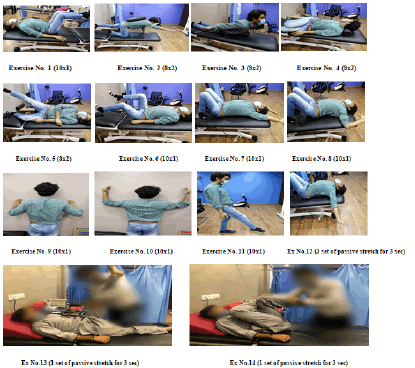
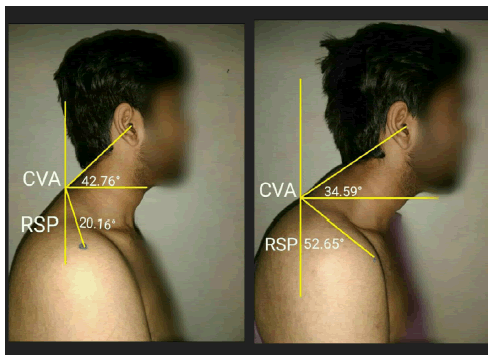
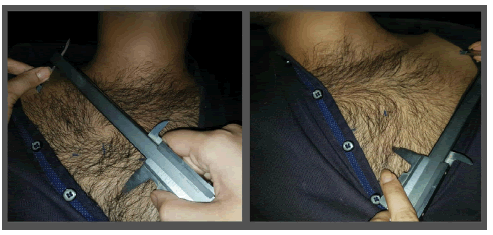
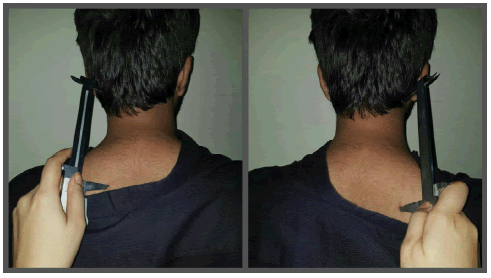
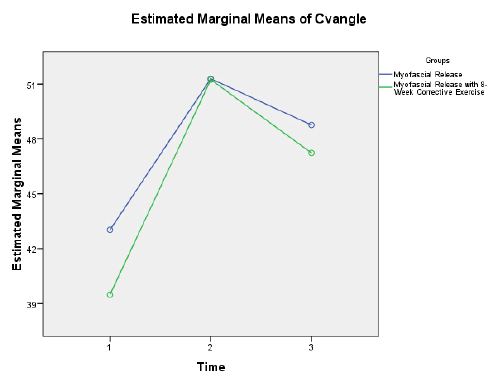
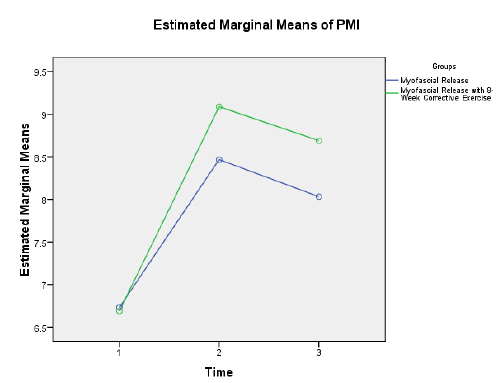
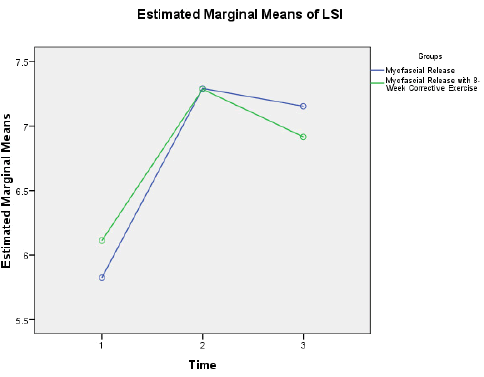



 The Annals of Medical and Health Sciences Research is a monthly multidisciplinary medical journal.
The Annals of Medical and Health Sciences Research is a monthly multidisciplinary medical journal.